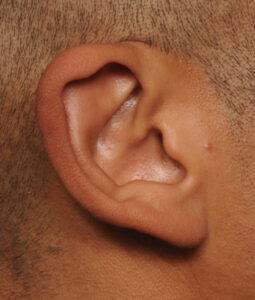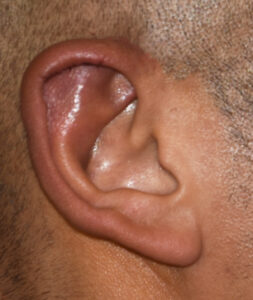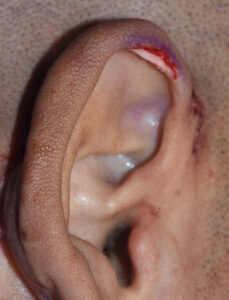Background: The ear is the most complex topographic feature of the face. (even though it is technically not on the face. It is a seemingly convoluted mix of ridges and valleys that have different variations amongst people which makes the ear almost as person specific as a fingerprint.
The most visually evident feature of the ear is the outer helical rim and its continuation into the earlobe. Because it is the outer perimeter of the ear a smooth shape to it is desired regardless of the overall size of the ear. While the outer edge of the rim needs to be smooth this actually applies to its inner edge as well. Such a smooth inner edge of the helix can develop a prominence or bulge which is most commonly seen in the superior helical rim. This is known as helical lidding and represents a bump or overgrowth of cartilage. It is the equivalent of Wharton’s tubercle which is a cartilage bump on the outer helical rim edge.



Case Highlights:
1) Helical lidding refers to an overhang of the inner rim of the outer helical rim most commonly seen at the superior helix.
2) Helical lidding is the result of a cartilage prominence that can be reduced with the excessive skin by direct excision.
3) Helical lidding correction can be safely done concurrently with almost any other type of otoplasty procedure.
Dr. Barry Eppley
Indianapolis, Indiana




